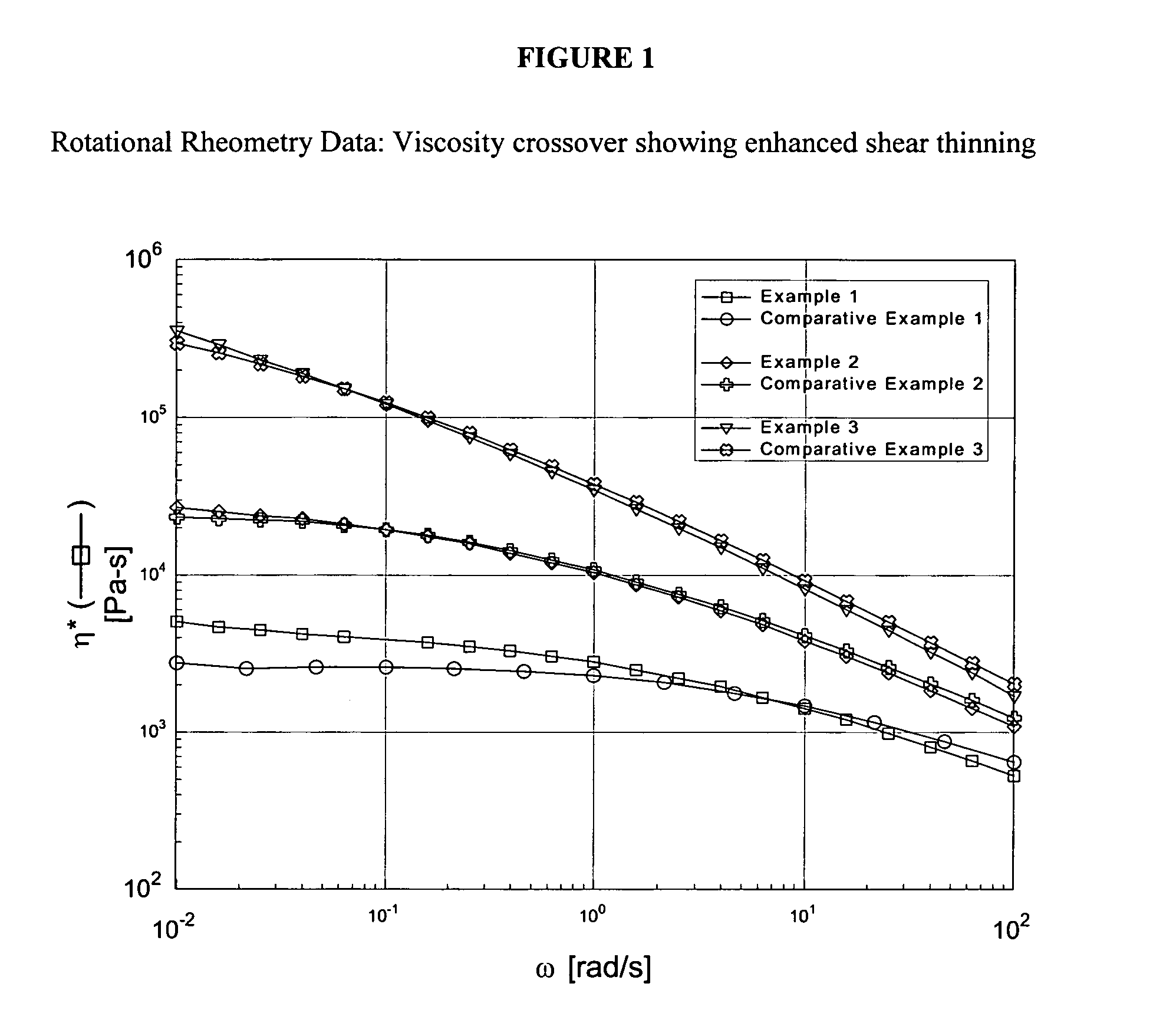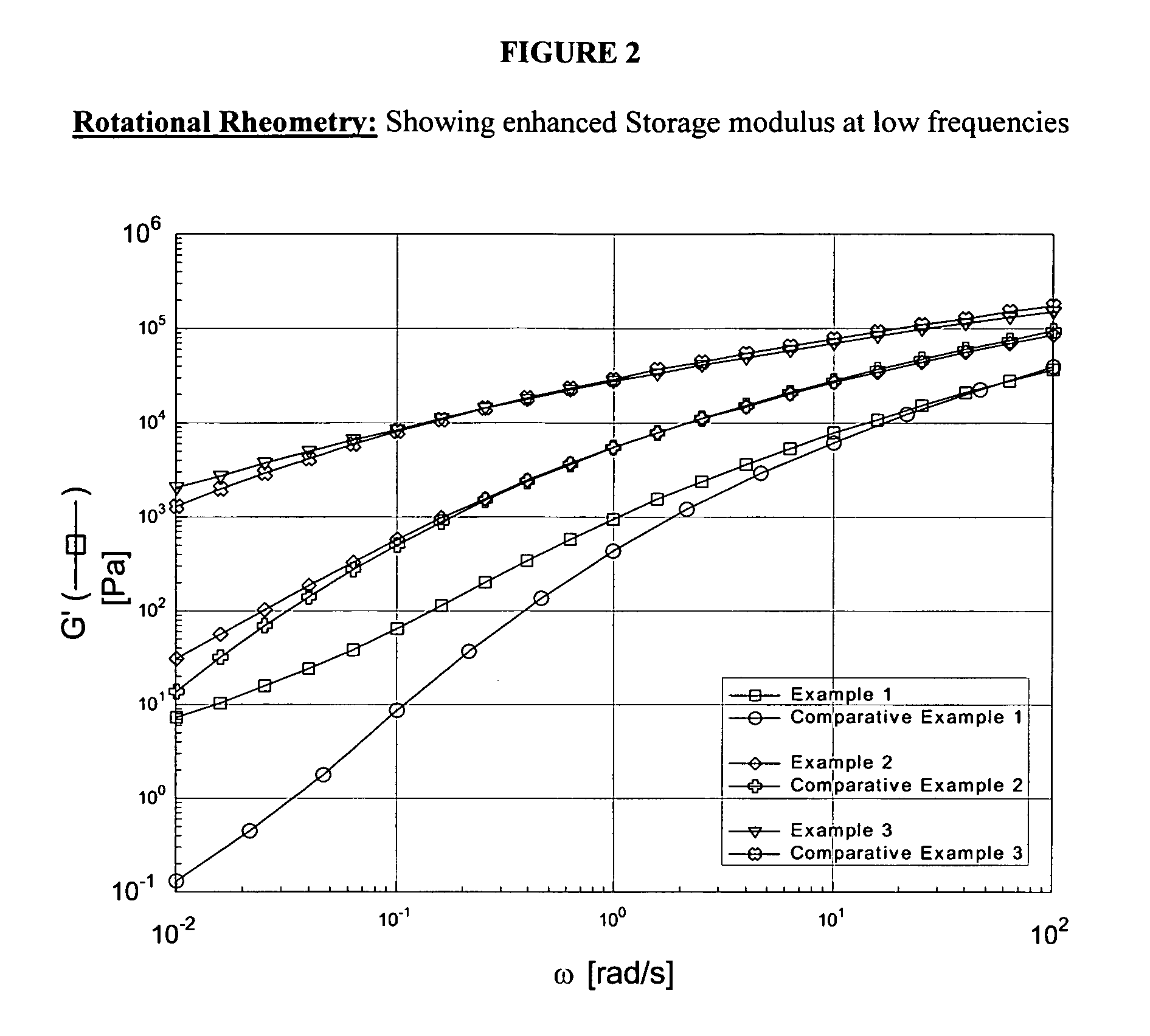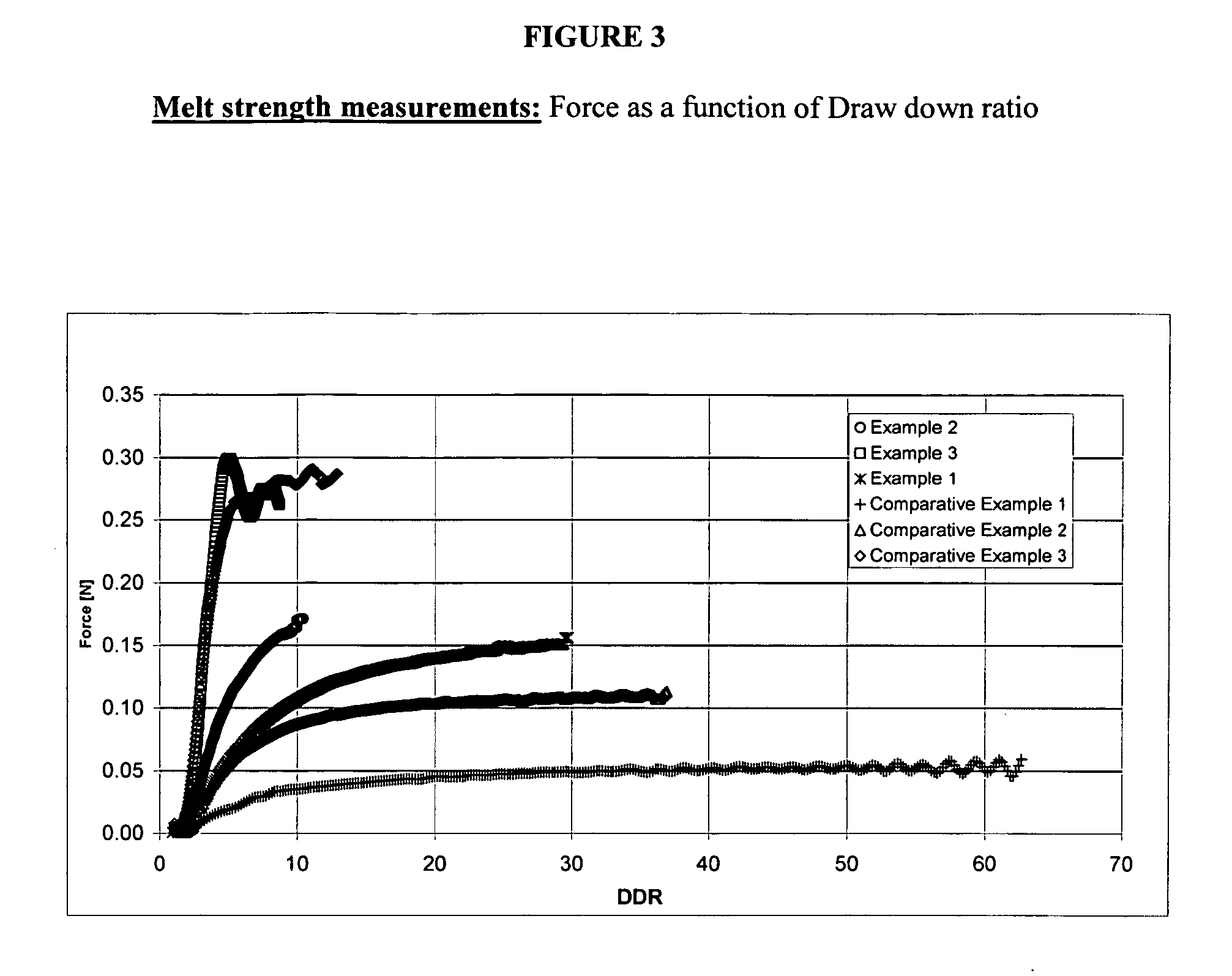Branched fluoropolymers
a fluoropolymer and branched technology, applied in the field of branched fluoropolymers, can solve the problems of low molecular weight resin melt strength, poor shear thinning behavior, and inconvenient use in blown films, extrusion blow molding,
- Summary
- Abstract
- Description
- Claims
- Application Information
AI Technical Summary
Benefits of technology
Problems solved by technology
Method used
Image
Examples
example 1
[0063] Vinylidene fluoride homopolymer made using Surflon 111 (from Asahi) with potassium persulfate and Luperox 230 as initiators. To a 2 gallon stainless steel reactor was added 4300 g of water, 75 g of a 15 wt % aqueous Surflon 111 surfactant solution, 5.5 g of ethyl acetate, 1.68 g of Luperox 230. The mixture was purged with argon and agitated for 10 minutes. The reactor was sealed, agitation was continued, and the reactor was heated to 135 degrees Celsius. The reactor was charged with vinylidene fluoride to reach a pressure of 4600 kPa. A 1.6 wt % solution of potassium persulfate was then fed continuously at a rate between 2 and 120 g / h then reduced to 60 g / h after 30 minutes. The reaction temperature was held at 125 degrees Celsius, and the reaction pressure was maintained by adding as needed vinylidene fluoride. After 2.5 hours, the feed of vinylidene fluoride was stopped. For a period of 10 minutes, agitation was continued, initiator fed and the temperature was maintained. T...
example 2
[0064] Example 2 is similar to example 1 except that the amount of Luperox 230 co-initiator was varied. To a 2 gallon stainless steel reactor was added 4300 g of water, 75 g of a 15 wt % aqueous Surflon 111 surfactant solution, 5.5 g of ethyl acetate, 1.40 g of Luperox 230. The mixture was purged with argon and agitated for 10 minutes. The reactor was sealed, agitation was continued, and the reactor was heated to 135 degrees Celsius. The reactor was charged with vinylidene fluoride to reach a pressure of 4600 kPa. A 1.6 wt % solution of potassium persulfate was then fed continuously at a rate between 2 and 120 g / h then reduced to 60 g / h after 30 minutes. The reaction temperature was held at 125 degrees Celsius, and the reaction pressure was maintained by adding as needed vinylidene fluoride. After 2.5 hours, the feed of vinylidene fluoride was stopped. For a period of 10 minutes, agitation was continued, initiator fed and the temperature was maintained. The initiator feed was then s...
example 3
[0065] Example 3 is similar to Example 1 except that no Luperox 230 was used. To a 2 gallon stainless steel reactor was added 4300 g of water, 75 g of a 15 wt % aqueous Surflon 111 surfactant solution. The mixture was purged with argon and agitated for 10 minutes then 5.5 g of ethyl acetate were added. The reactor was sealed, agitation was continued, and the reactor was heated to 135 degrees Celsius. The reactor was charged with vinylidene fluoride to reach a pressure of 4600 kPa. A 1.6 wt % solution of potassium persulfate was then fed continuously at a rate between 2 and 120 g / h then reduced to 60 g / h after 30 minutes. The reaction temperature was held at 125 degrees Celsius, and the reaction pressure was maintained by adding as needed vinylidene fluoride. After 2.5 hours, the feed of vinylidene fluoride was stopped. For a period of 10 minutes, agitation was continued, initiator fed and the temperature was maintained. The initiator feed was then stopped, and after 15 minutes the a...
PUM
| Property | Measurement | Unit |
|---|---|---|
| Temperature | aaaaa | aaaaa |
| Temperature | aaaaa | aaaaa |
| Temperature | aaaaa | aaaaa |
Abstract
Description
Claims
Application Information
 Login to View More
Login to View More - R&D
- Intellectual Property
- Life Sciences
- Materials
- Tech Scout
- Unparalleled Data Quality
- Higher Quality Content
- 60% Fewer Hallucinations
Browse by: Latest US Patents, China's latest patents, Technical Efficacy Thesaurus, Application Domain, Technology Topic, Popular Technical Reports.
© 2025 PatSnap. All rights reserved.Legal|Privacy policy|Modern Slavery Act Transparency Statement|Sitemap|About US| Contact US: help@patsnap.com



